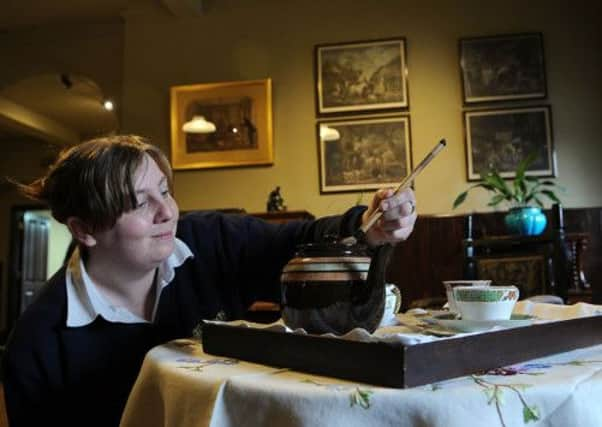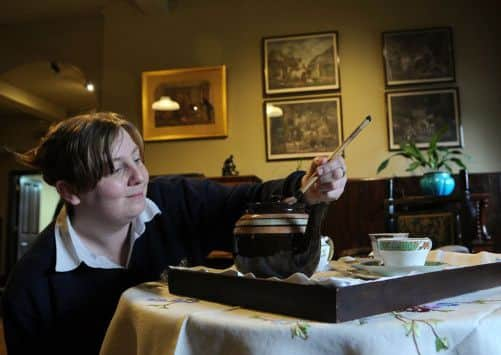Video: Life below stairs at Yorkshire’s Downton Abbey


Scrubbing the floors, polishing the silverware and fetching wood to keep the fires blazing were all part of the duties undertaken by a young Tom Cockerill.
As a 15-year-old boy, he was part of the staff at the Edwardian country house, making sure everything was in tip-top shape for the powerful Gascoigne family, who lived there from 1825.
Advertisement
Hide AdAdvertisement
Hide AdToday, aged 91, his first-hand experience of working on the Aberford estate has helped shape a major five-month restoration project.


And tomorrow, the servants’ rooms will re-opened to the public for the first time following the project, which has restored them to the way they looked more than 100 years ago.
Mr Cockerill, who worked at the house in 1936 and who now lives in Malton, North Yorkshire, said his duties also included cleaning the butler’s pantry and collecting the mail from Aberford.
A regular visitor to the house these days, he added: “Lotherton Hall was my home and I made friends and had good times here. I think it’s marvellous that through these restored rooms people can get a glimpse of what life was like for us. It was another world.”
Advertisement
Hide AdAdvertisement
Hide AdThe visitor attraction, managed by Leeds City Council, was home to the Gascoigne family from 1825 until they gifted it to the city of Leeds in 1968.
During their time in residence, the family employed around 20 staff at any one time to serve them and run the house.
Major changes were made to the servants’ rooms in 1970 when they were used to create the Oriental Gallery.
But in recent years, spurred in part by the popularity of TV’s Downton Abbey, an increasing number of visitors have asked about the servants’ quarters and what life was like below stairs, sparking the decision to return the rooms to their original look and feel.
Advertisement
Hide AdAdvertisement
Hide AdThe restoration project has focused on three rooms used by the serving staff on the ground floor of the house: the Brushing Room, the Housekeeper’s Room and the Servants’ Hall, which were all built as part of an extension of the hall in 1903.
Experts have used the original architect’s plans and other source material to piece together a picture of the past.
The restoration team began their work with the Oriental Gallery, dismantling it to reveal previously hidden features including five perfectly-preserved windows which had been bricked up for more than 40 years and the original floor, which is more than 100 years old.
Paint scrapings were taken to determine colour schemes used in the décor for the rooms, while the team also looked at existing inventories from 1905 and 1937 to discover the objects that were in them when they were the working servants’ quarters. Written and oral histories given by staff who worked there were also examined, enabling the team to accurately recreate each room’s decoration and layout.
Advertisement
Hide AdAdvertisement
Hide AdLeeds City Council executive member for leisure, Councillor Adam Ogilvie, said: “We cannot wait to open the doors and show visitors to Lotherton Hall the restored servants’ quarters.
“The incredible success and popularity of programmes like Downton Abbey shows there is still a fascination with the lives of the people who lived and worked in historic country houses, so I would advise people of all ages to come along to Lotherton Hall and find out more about the real thing.”
Plans are also in place to offer interactive elements such as audio recordings and recollections.
To coincide with the re-opening of the servants’ rooms, the house will also feature a major new exhibition divided into two parts: Dressed for Battle and Family Duty and Honour which examine how war impacted on the house and the people who lived there.